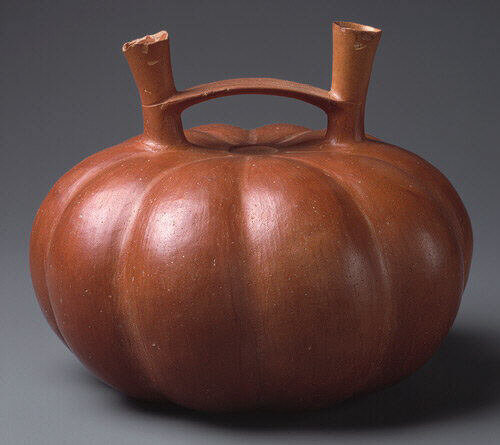PARACAS CERAMICS
Paracas ceramics, associated to the elaborate mummy bundles excavated in Paracas peninsula, consist of polychromed vessels that are painted with a mixture of resin and pigment after firing. Incised outlines (incised before firing) separate flat areas of color.
The bowl seen here depicts the Paracas Oculate Being and is in the collection of the Art Institute of Chicago. Looking at it closely, you can see that there are incised lines that define the shape of this figure and its main features: the large eyes, smiling mouth with an extended form that appears to be a tongue, and the pendant nose. There are also long shapes that radiate from the figure’s circular head. After the vessel was fired and hardened, the Paracas artist added the color with a flat application of resin-based paint, keeping the incised lines as outlines for those shapes.
Another tradition of ceramics in the South Coast is called Topará. Topará ceramics are often monochromatic (they do not have colorful decorations). They are covered with a slip (diluted clay), usually orange, and they are burnished so they have a smooth surface. A typical Topará ceramic vessel has a chamber modeled into a representation of a gourd, topped by two spouts connected by a bridge. However, some of these Topará vessels can be modeled into animal forms as well. The example seen below, from the Metropolitan Museum of Art, is a great example of this style.

